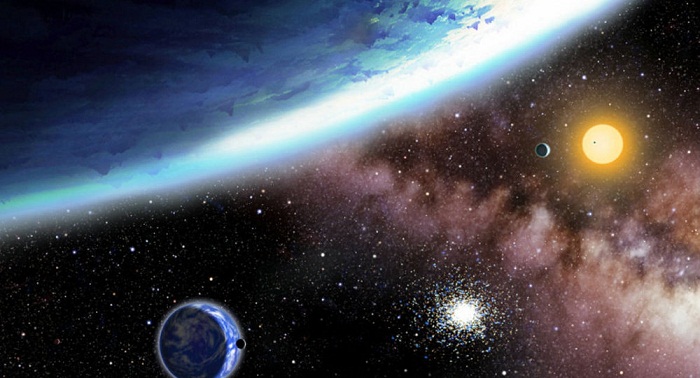Earlier this month, Hertz announced at a meeting of the American Astronomical Society in Florida that the agency is gathering four teams to study each of the four proposed projects in detail. The groups are determined to find out what capabilities each of the projected missions has, and what limitations may be present.
One project is focused on the development of a “direct imaging” telescope, allowing close investigation of exoplanets. The three other projects are telescopes similar to the Hubble Telescope, but much more powerful.
The four blueprints were detailed in NASA’s 2013 Astrophysics Roadmap, "Enduring Quests, Daring Visions: NASA Astrophysics in the Next Three Decades."
The “direct imaging” project, known as the habitable exoplanet imager mission or simply "HabEx," aims to build a planetary telescope that could allow scientists to discover atmosphere and other signs of life on exoplanets of all types in various solar systems.
Bertrand Mennesson, a NASA exoplanet scientist, pointed out that HabEx would "help assess the prevalence of habitable planets and [the] possibly of primitive life in our galaxy." It could also help in studying the evolution of solar systems in our galaxy.
The second project is a telescope that has a 12 meter-wide primary mirror, five times larger than that of the Hubble Telescope. While scientists proposed several possible options on the role of such a device, the most widely accepted concept is called LUVOIR (Large Ultraviolet Visible Infrared).
"LUVOIR could study the formation of stars and planets in our galaxy, map the evolution of galaxies, illuminate the birth of the first stars in the universe and probe into black hole environments," Aki Roberge, a scientist at NASA`s Goddard Space Flight Center in Greenbelt, Maryland, said to Space.com.
Roberge noted that LUVOIR would have some overlaps with HabEx, as it could identify signs of life on distant planets, but would have a “broader range of exoplanet observations.”
The third project, the X-ray surveyor, is intended to examine matter surrounding black holes and to follow the process of galaxy development, eventually revealing the evolution of the known universe in the course of its 13.8 billion years.
A next-generation far-infrared space telescope, dubbed Far-IR, is the fourth of the proposed projects. It would capture light in the far-infrared range, allowing it to scrutinize distant cosmic objects, including stars, at all life cycle stages. In the process, scientists could determine the composition of space bodies and where their components originate.
"If you don`t do things in the infrared, you`re missing half the picture, effectively," Kartik Sheth, a NASA astrophysics division program scientist said to Space.com.
All of the projects are considered NASA milestones. Bringing all of the four missions to life would take decades, at a minimum, and consequently a decision on which project to realize depends not only on NASA scientists.
The National Academy of Sciences` National Research Council assembles a committee every ten years to prioritize the needs of space exploration. It normally releases a report containing recommendations for the following decade.
More about:
















































